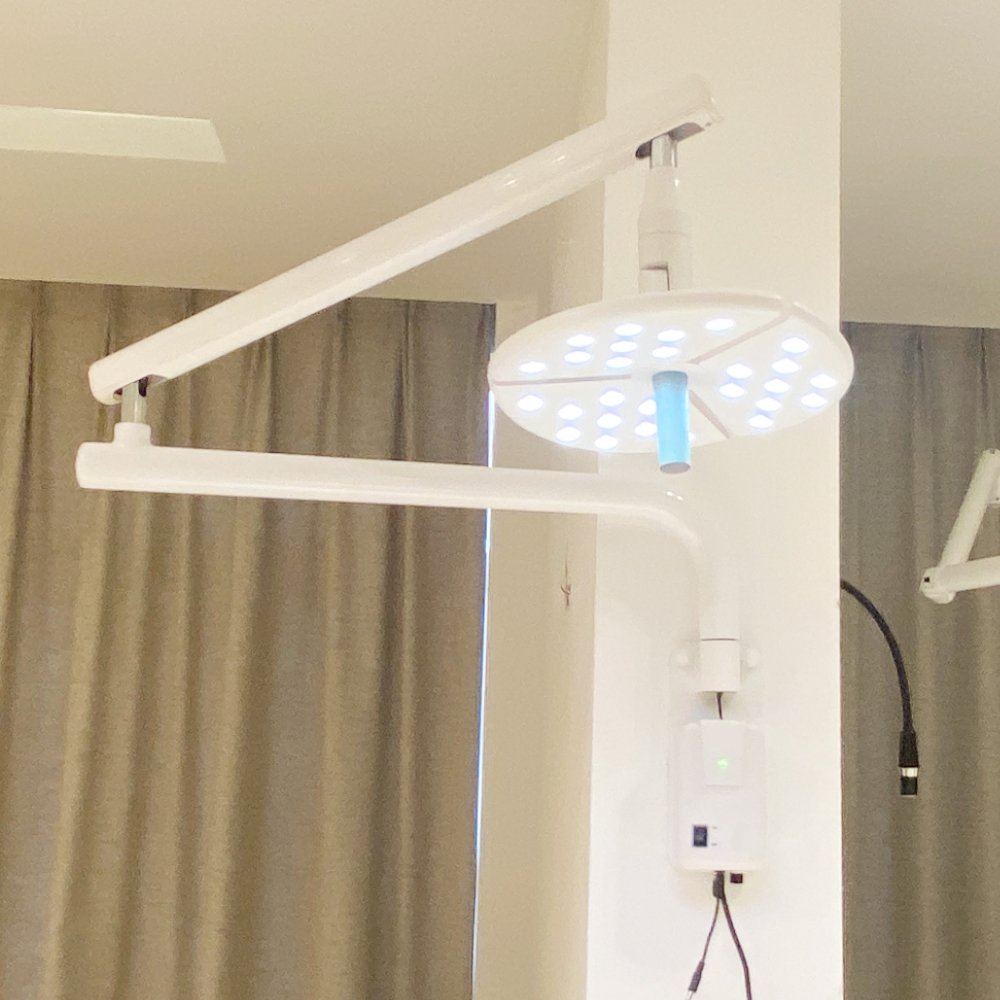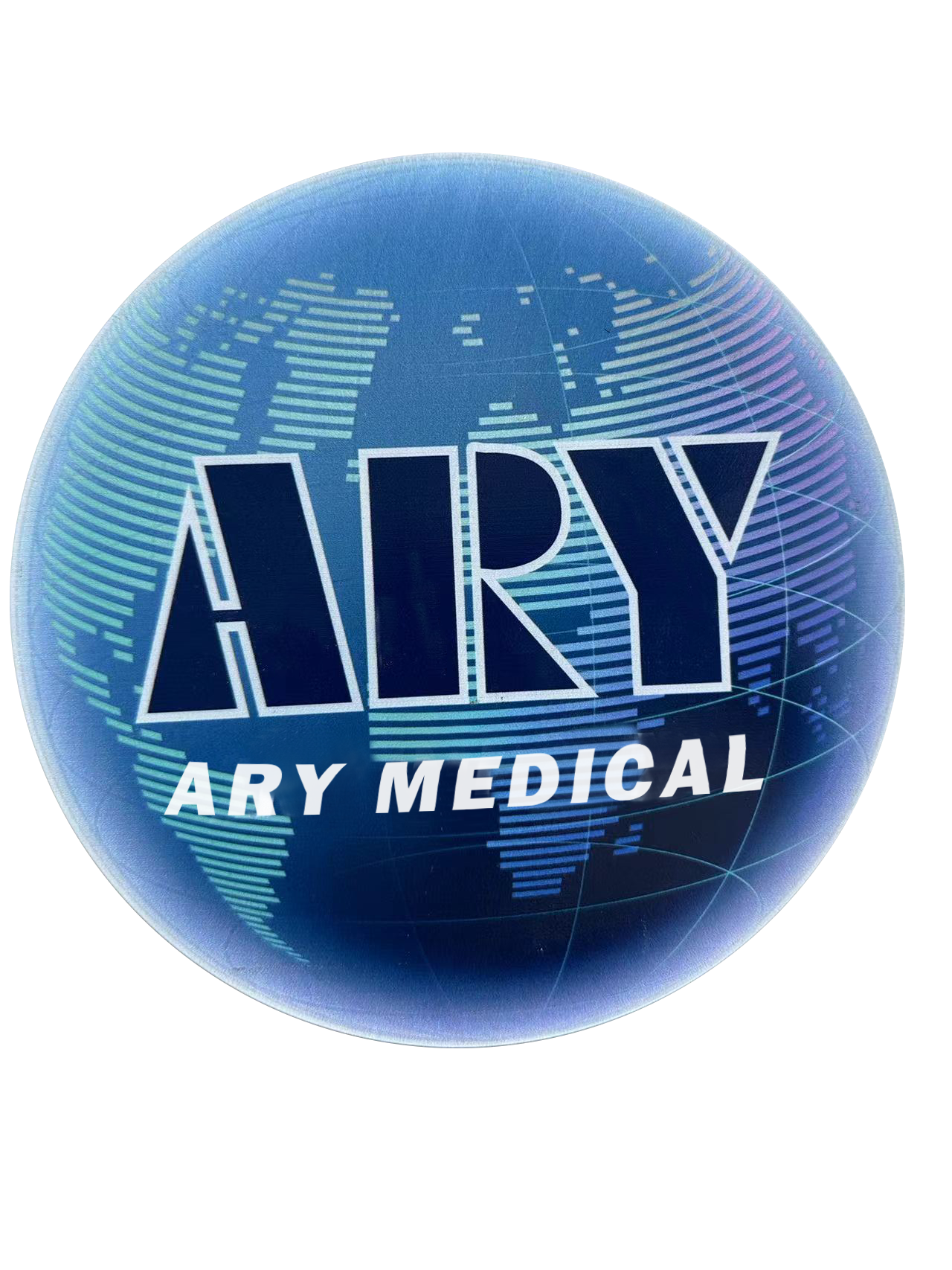In the complex ecosystem of modern healthcare facilities, lighting plays a far more critical role than simply illuminating spaces. Medical light systems directly impact diagnostic accuracy, procedural precision, staff performance, and patient outcomes. From specialized surgical lighting systems to versatile examination lights, selecting the right illumination solutions represents a significant investment decision with long-lasting clinical and operational implications.
This comprehensive guide explores the essential considerations for healthcare administrators, facility planners, and procurement specialists tasked with selecting optimal medical lighting solutions across various clinical environments.
Understanding the Diverse Lighting Needs Across Healthcare Settings
Different healthcare environments have distinct illumination requirements based on the clinical activities performed, the level of precision required, and the duration of procedures.
Operating Theaters: Where Precision Is Paramount
Surgical light requirements are among the most demanding in healthcare environments:
- Exceptional illumination intensity (typically 160,000+ lux for major procedures)
- Superior color rendering (CRI >95) for accurate tissue visualization
- Shadow control technology to maintain visibility despite obstructions
- Adjustable color temperature for different surgical specialties
- Minimal heat generation to maintain comfortable working conditions
- Exceptional reliability with redundant systems
“The quality of surgical lighting directly impacts procedural outcomes,” explains Dr. Elena Vasquez, Chief of Surgery at Metropolitan Medical Center. “Even minor compromises in illumination can affect tissue identification, extend procedure times, and potentially impact patient safety.”
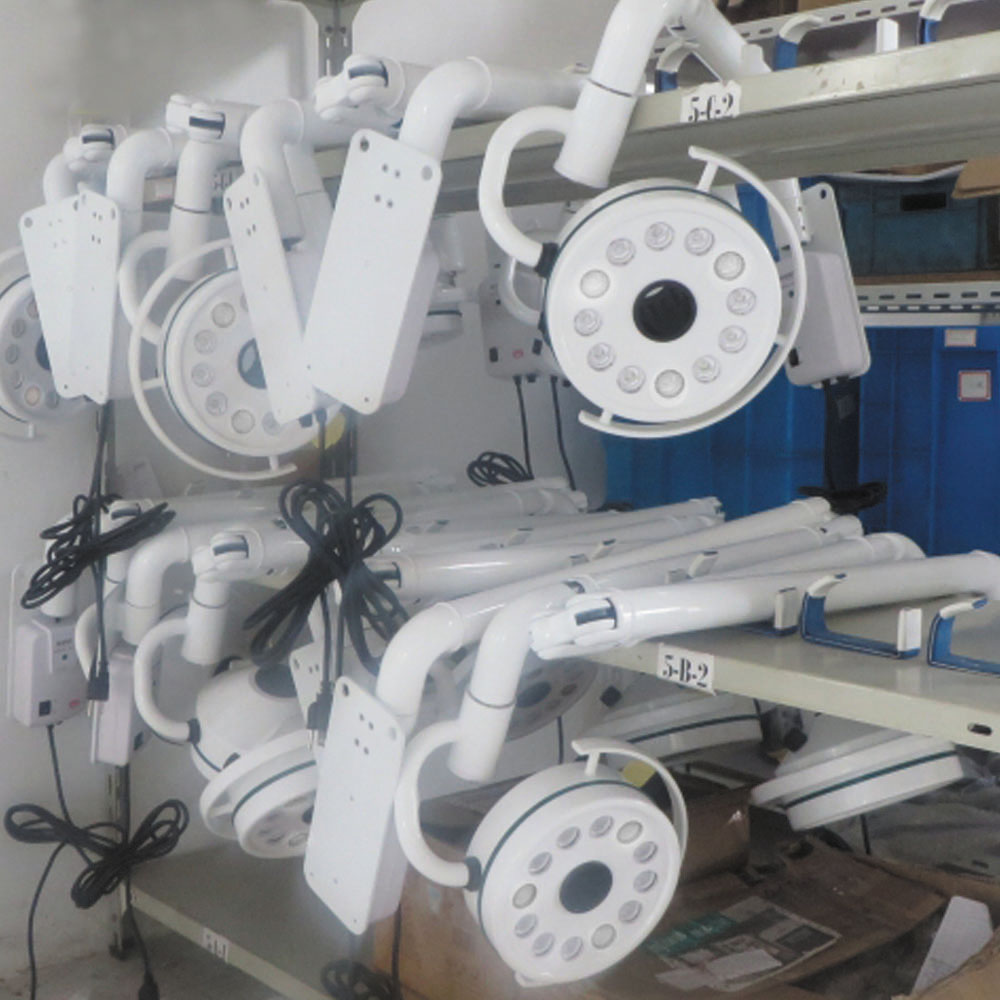

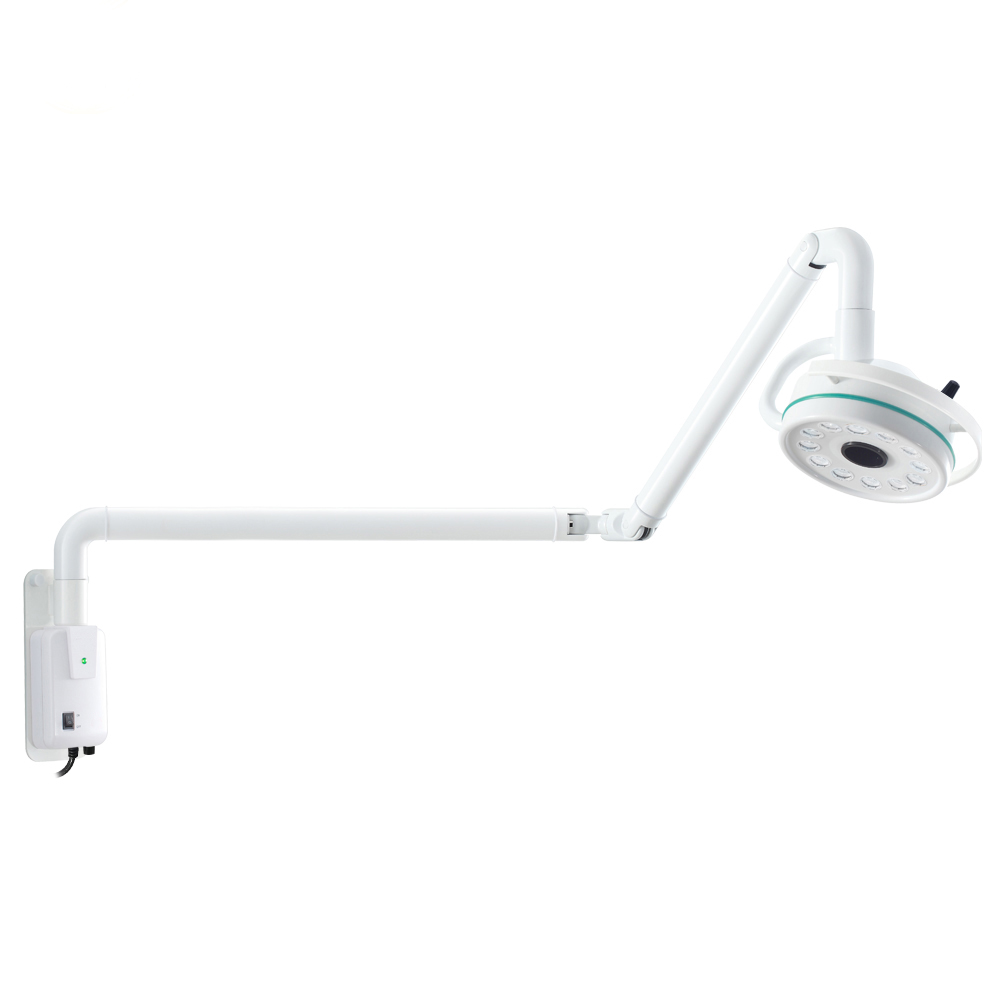
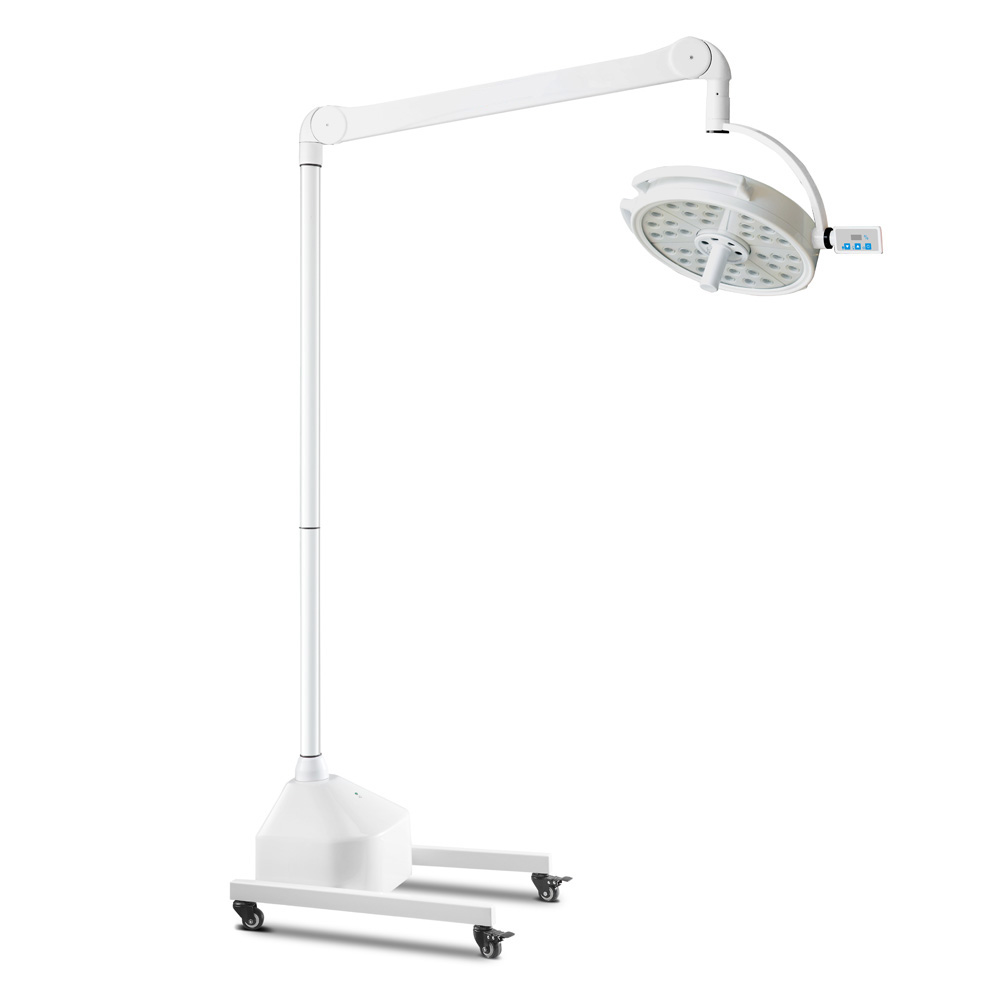
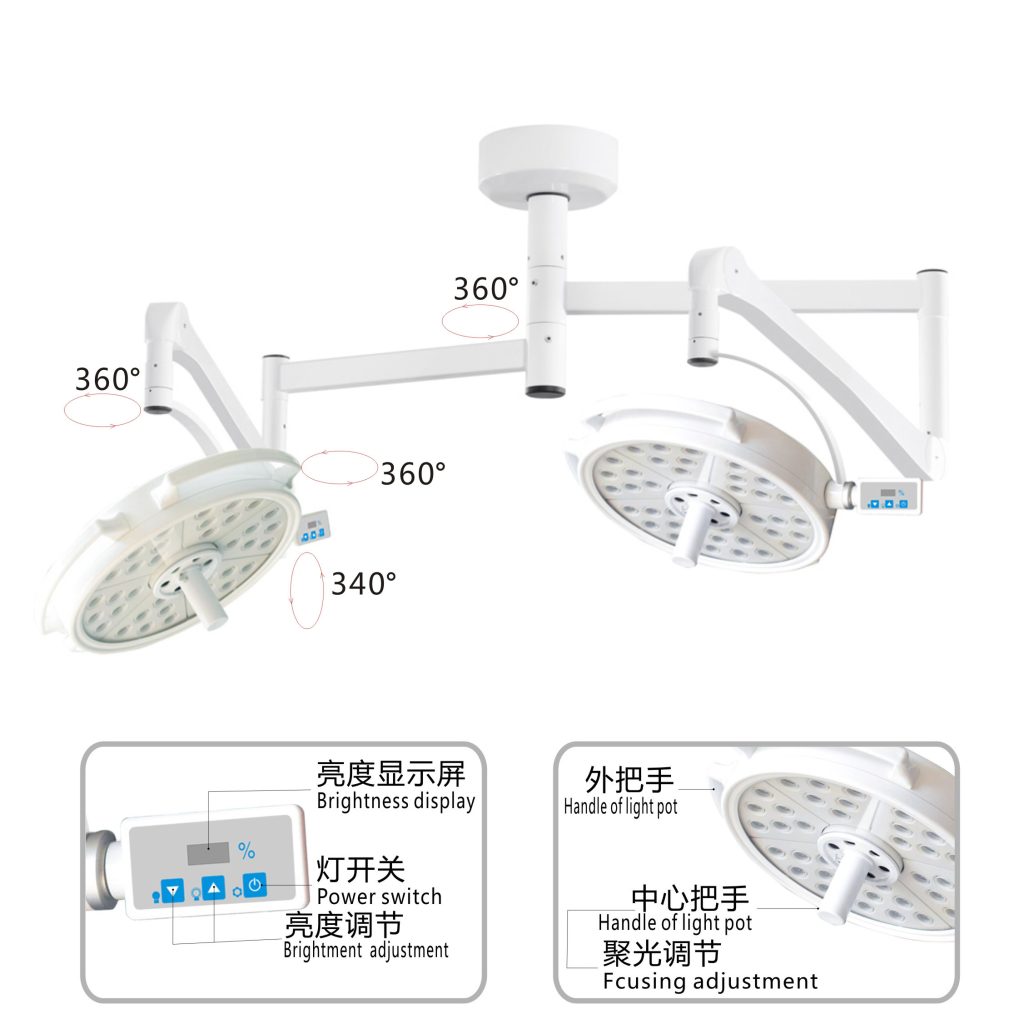



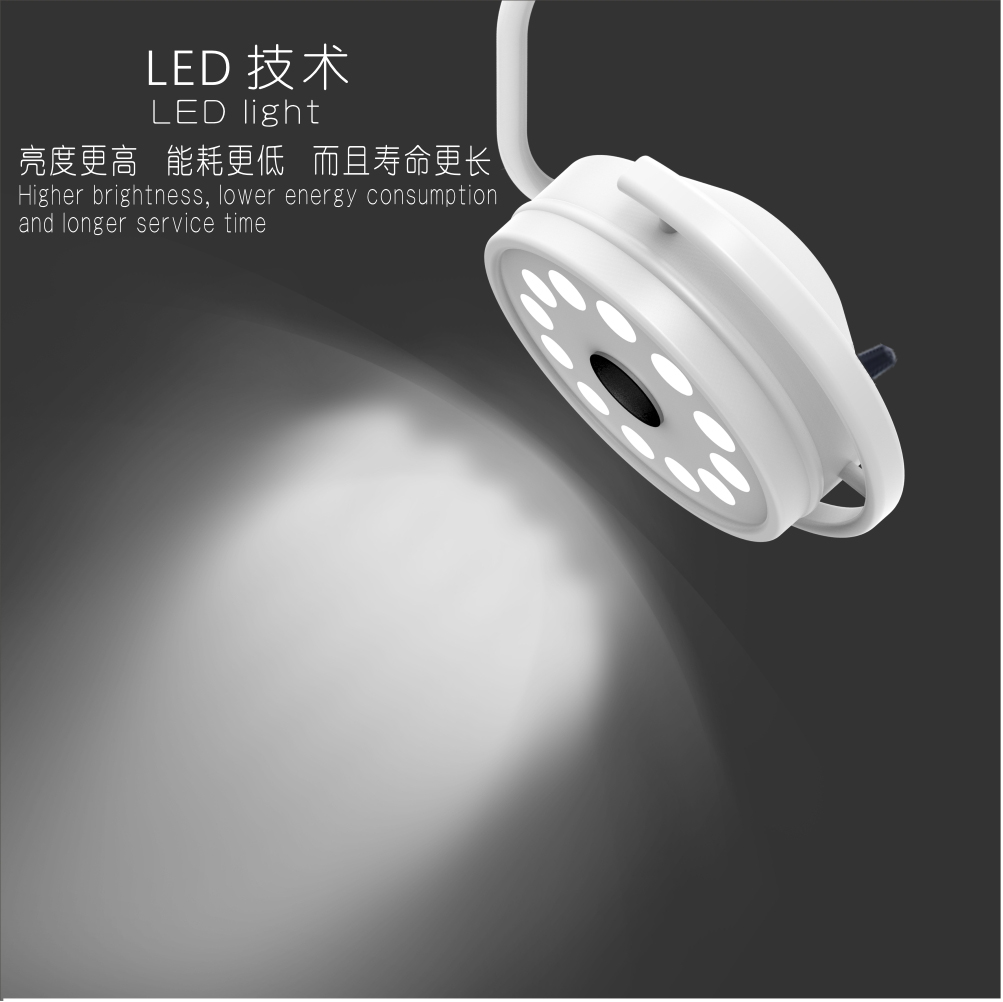
Examination Rooms: Balancing Versatility and Performance
Medical examination lights must accommodate diverse diagnostic activities:
- Moderate to high illumination intensity (40,000-90,000 lux)
- Excellent color rendering (CRI >90) for accurate assessment
- Flexible positioning for different examination types
- Compact design for space-efficient integration
- Easy cleaning and infection control
- Energy efficiency for continuous operation
Specialty Procedure Rooms: Tailored Illumination
Specialized clinical areas require customized lighting solutions:
Endoscopy Suites
- Dimmable ambient lighting
- Anti-glare monitors
- Cold light sources for endoscopic procedures
- Task lighting for equipment preparation
Labor and Delivery
- Adjustable lighting from bright (for deliveries) to subdued (for labor)
- Specialized examination lights for obstetric procedures
- Warm-tone options for non-procedural periods
- Emergency high-intensity capabilities
Emergency Departments
- High-reliability systems with backup power integration
- Rapid-positioning capabilities for urgent procedures
- Trauma-specific illumination intensities
- Mobile options for flexible deployment
Diagnostic Imaging Areas: Controlled Illumination
Imaging departments have unique requirements:
- Dimmable lighting for monitor viewing
- Task-specific illumination for patient positioning
- Specialized lighting for interventional radiology procedures
- Low-glare solutions minimizing screen reflections
Key Performance Criteria for Medical Lighting Selection
When evaluating healthcare facility lighting options, several technical specifications deserve careful consideration:
Illumination Intensity
Light intensity, measured in lux, directly impacts visualization capabilities:
- Surgical lighting systems: 160,000-200,000 lux for major procedures
- Minor surgical lights: 100,000-160,000 lux for less complex interventions
- Examination lights: 40,000-90,000 lux depending on specialty
- Procedure lights: 70,000-120,000 lux for specialized interventions
“Intensity requirements vary significantly based on procedure depth, duration, and complexity,” notes medical equipment specialist Sarah Johnson. “The goal is providing sufficient illumination without creating excessive heat or visual fatigue.”
Color Rendering Index (CRI)
CRI measures how accurately a light source reveals the true colors of objects compared to natural light:
- Values range from 0-100, with 100 representing perfect color reproduction
- Surgical lights should provide CRI values of 95+
- Examination lights should deliver CRI values of 90+
- Higher CRI values are particularly crucial for:
- Dermatological examinations
- Wound assessment
- Tissue perfusion evaluation
- Jaundice detection
Color Temperature
Color temperature, measured in Kelvin (K), affects tissue appearance and user comfort:
- 4,000-4,500K: Neutral white, balanced color representation
- 4,500-5,000K: Cool white, enhancing contrast and detail visibility
- 5,000-6,000K: Daylight simulation, maximizing detail perception
- Adjustable temperature systems offer optimal flexibility
“The ideal color temperature often depends on both the procedure type and surgeon preference,” explains lighting engineer Dr. James Chen. “Adjustable systems allow customization based on specific clinical needs and user comfort during extended procedures.”
Shadow Control
Effective shadow management is critical for maintaining visibility:
- Multi-LED arrays minimizing shadows from hands and instruments
- Overlapping light fields ensuring consistent illumination
- Deep column illumination maintaining visibility in cavity procedures
- Automatic compensation for obstructions
Pattern Size Adjustment
Adaptable light field size accommodates different procedure types:
- Focused patterns for precise work in limited fields
- Expanded patterns for broader surgical sites
- Consistent intensity across the entire illuminated field
- Sharp edge definition minimizing distraction
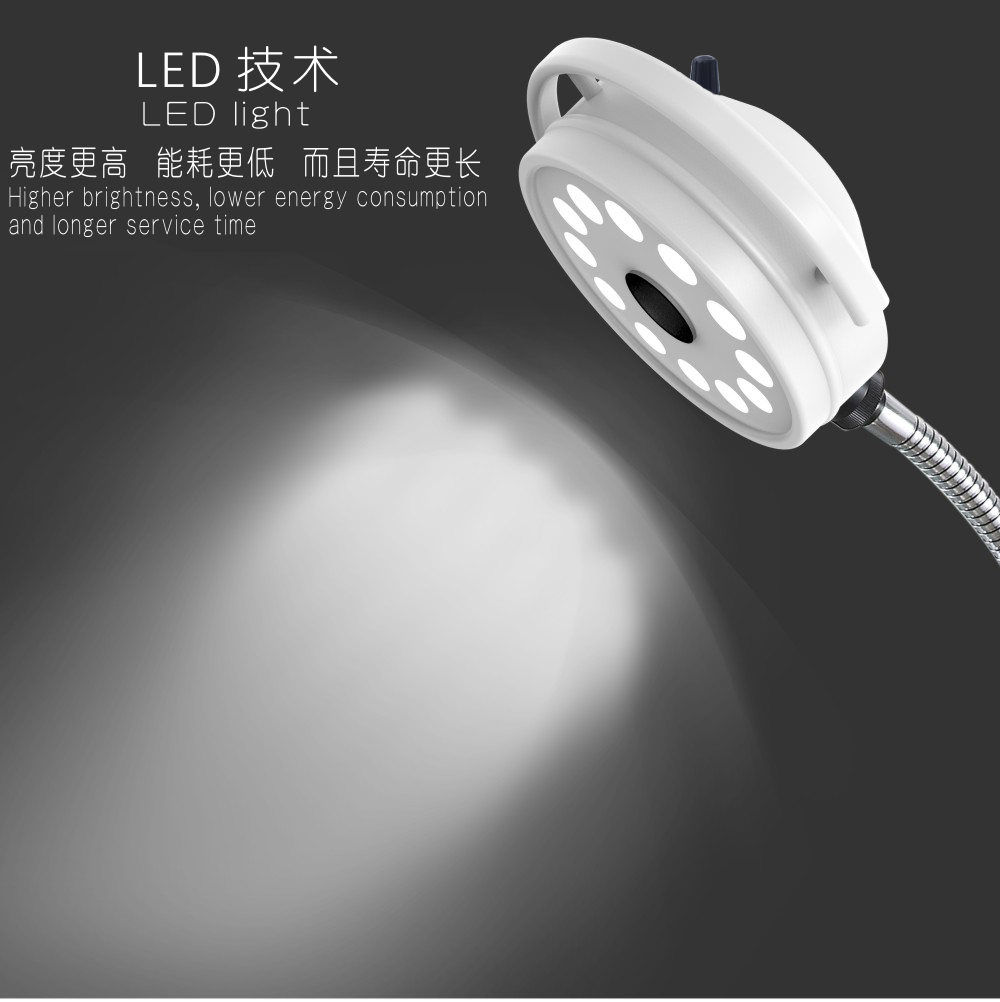
LED Technology: The New Standard in Medical Lighting
While halogen technology dominated medical light applications for decades, LED systems have emerged as the new standard, offering numerous advantages:
Energy Efficiency
Modern LED systems deliver remarkable efficiency:
- 70-80% less energy consumption than halogen equivalents
- Reduced heat generation decreasing HVAC demands
- Lower carbon footprint aligning with sustainability initiatives
- Reduced operating costs over system lifespan
Extended Operational Life
LED longevity dramatically reduces maintenance requirements:
- 50,000+ hour typical lifespan (versus 1,000-2,000 for halogen)
- Reduced replacement frequency minimizing disruption
- Gradual output decline rather than sudden failure
- Lower lifetime maintenance costs
Superior Performance Characteristics
Beyond efficiency and longevity, LED technology offers clinical advantages:
- Consistent color temperature throughout operational life
- Instant-on capability without warm-up period
- Minimal heat transfer to the surgical field
- Excellent color rendering capabilities
- Precise optical control for optimal pattern formation
Environmental Benefits
LED systems align with healthcare sustainability initiatives:
- Reduced energy consumption lowering carbon emissions
- Absence of mercury and other hazardous materials
- Longer lifespan reducing waste generation
- Lower heat production decreasing cooling requirements
“The transition to LED technology represents a rare situation where clinical, operational, and environmental benefits align perfectly,” notes healthcare sustainability consultant Emma Davis. “The initial investment premium is typically recovered through energy savings alone, with the additional benefits of improved performance and reduced maintenance representing significant added value.”
Integration Capabilities: Beyond Standalone Lighting
Modern medical lighting systems increasingly function as integrated components of the broader healthcare technology ecosystem rather than isolated fixtures.
Video Integration
Advanced systems incorporate imaging capabilities:
- In-light HD cameras for documentation and teaching
- Video transmission to displays throughout the clinical environment
- Recording capabilities for procedure documentation
- Telemedicine integration for remote consultation
Control System Integration
Sophisticated control interfaces enhance functionality:
- Touch-screen control panels with intuitive interfaces
- Voice command capabilities for hands-free operation
- Gesture control options maintaining sterile field
- Integration with broader room control systems
- Preset configurations for different procedures and users
Facility Management Systems
Enterprise-level integration enhances operational efficiency:
- Remote monitoring of system performance
- Predictive maintenance scheduling
- Usage tracking for resource allocation
- Energy consumption monitoring
“The integration capabilities of modern lighting systems transform them from simple illumination devices to comprehensive clinical tools,” explains healthcare technology integration specialist Robert Park. “When selecting systems, considering both current and future integration needs ensures maximum long-term value.”
Mobile vs. Fixed Systems: Matching Solutions to Clinical Needs
Healthcare facilities must determine the appropriate balance between ceiling-mounted and mobile lighting solutions based on their specific clinical requirements.
Ceiling-Mounted Systems: Maximizing Performance and Convenience
Fixed installations offer several advantages:
- Maximum stability during extended procedures
- Optimal positioning options with multi-arm configurations
- No floor space requirements
- Integration with ceiling service booms and other infrastructure
- Higher maximum load capacity for accessories
These systems are ideal for:
- Dedicated operating theaters
- High-volume procedure rooms
- Spaces with consistent layout and usage patterns
- Environments requiring maximum performance specifications
Mobile Systems: Flexibility and Deployment Options
Portable solutions provide different benefits:
- Deployment flexibility across multiple locations
- No architectural modifications required
- Lower initial investment
- Backup capabilities during fixed system maintenance
- Ideal for facilities with changing space allocations
These systems best serve:
- Multi-purpose clinical spaces
- Temporary or satellite facilities
- Backup and contingency planning
- Budget-constrained environments
- Facilities anticipating future reconfiguration
“The decision between fixed and mobile systems often isn’t binary,” notes healthcare architect Maria Rodriguez. “Many facilities benefit from a strategic mix of both types, with fixed installations in high-utilization areas and mobile units providing flexibility and redundancy.”
Ergonomic Considerations: Supporting Clinical Performance
The physical interface between users and lighting systems significantly impacts clinical efficiency and staff comfort during extended procedures.
Positioning Mechanisms
Movement systems should provide:
- Effortless positioning with minimal force requirements
- Precise placement with stable positioning
- Extensive range of motion accommodating different users and procedures
- Drift-free stability maintaining position throughout procedures
- Single-hand adjustment capability
Control Interfaces
User controls should offer:
- Intuitive operation requiring minimal training
- Consistent layout across different systems
- Clear visual feedback confirming settings
- Accessibility from multiple positions
- Sterile field operation options
Physical Footprint
System design should consider:
- Ceiling space utilization in crowded clinical environments
- Clearance requirements for tall staff members
- Compatibility with other ceiling-mounted equipment
- Minimal obstruction of air flow patterns
- Accommodation of future technology additions
“Ergonomic factors directly impact clinical performance,” explains Dr. Thomas Lee, ergonomics specialist. “Even the most technically advanced lighting system will underperform if users find it difficult to position or control optimally.”
Infection Control: Design for Prevention
In healthcare environments, all equipment must support rigorous infection prevention protocols.
Surface Design
Optimal surfaces feature:
- Smooth, seamless construction minimizing bacterial harboring
- Materials resistant to disinfection chemicals
- Non-porous surfaces preventing contamination ingress
- Minimal seams and joints reducing cleaning challenges
- Antimicrobial coatings on high-touch components
Cleaning Protocols
Systems should accommodate:
- Regular disinfection without performance degradation
- Clear manufacturer guidelines for approved cleaning agents
- Accessible surfaces without disassembly requirements
- Protection of sensitive electronic components
- Compatibility with facility-standard disinfection protocols
Touchless Operation
Advanced systems incorporate:
- Motion-activated controls minimizing contact requirements
- Voice command capabilities for hands-free adjustment
- Proximity sensors for automatic activation
- Foot control options for maintaining hand sterility
“Infection control considerations have gained even greater prominence following recent global health challenges,” notes infection prevention specialist Dr. Sarah Chen. “Lighting systems with thoughtful design for disinfection contribute meaningfully to overall facility infection prevention strategies.”
Total Cost of Ownership: Beyond Purchase Price
Comprehensive financial analysis must consider the complete lifecycle costs of medical lighting systems.
Initial Investment
Purchase considerations include:
- Base system acquisition costs
- Installation expenses including structural modifications
- Commissioning and certification requirements
- Staff training programs
- Initial accessory purchases
Operational Costs
Ongoing expenses encompass:
- Energy consumption over projected lifespan
- Routine maintenance requirements
- Replacement parts and consumables
- Software updates and licensing
- Technical support services
Lifecycle Analysis
Long-term evaluation should address:
- Expected operational lifespan (typically 10+ years)
- Anticipated technology obsolescence timeline
- Future upgrade pathways and compatibility
- End-of-life disposal or recycling costs
- Warranty and service agreement terms
“The initial purchase price typically represents only 15-20% of the total lifecycle cost for major medical lighting systems,” explains healthcare financial analyst David Park. “A comprehensive TCO analysis often reveals that systems with higher upfront costs deliver significantly better long-term value through reduced operational expenses and extended useful life.”
Implementation Planning: Ensuring Successful Adoption
Even the most advanced lighting technology requires thoughtful implementation to deliver its full potential benefits.
Needs Assessment
Comprehensive evaluation should include:
- Detailed inventory of current lighting systems
- Documentation of performance limitations in existing equipment
- Structured input from clinical users across specialties
- Prioritization of replacement based on clinical impact
- Consideration of future service expansion plans
Vendor Evaluation
Selection criteria should encompass:
- Technical specifications meeting clinical requirements
- Manufacturer reputation and market longevity
- Local service and support capabilities
- User references from similar facilities
- Compatibility with existing infrastructure
Installation Planning
Implementation strategy should address:
- Phased replacement minimizing clinical disruption
- Coordination with other renovation activities
- Backup provisions during installation periods
- Thorough testing and commissioning protocols
- Detailed documentation of final configurations
Staff Training
Education programs should include:
- Hands-on training for all potential users
- Super-user development for ongoing internal support
- Documentation in multiple formats (video, written, quick-reference)
- Vendor support during initial usage period
- Refresher sessions following initial implementation
“The success of new lighting technology depends as much on implementation strategy as on the equipment itself,” notes clinical operations consultant Robert Chen. “A thoughtful, phased approach with comprehensive training maximizes adoption and utilization of advanced features.”
Case Study: Community Medical Center Lighting Modernization
The experience of Community Medical Center, a 350-bed regional hospital, provides valuable insights into the lighting selection and implementation process.
Initial Assessment
The facility conducted a comprehensive evaluation:
- Documentation of 12+ year old lighting systems across 14 operating rooms
- Collection of user feedback identifying performance limitations
- Energy audit quantifying consumption of existing systems
- Maintenance record review revealing increasing repair frequency
- Infection control assessment of current cleaning challenges
Selection Process
The evaluation team employed a structured approach:
- Development of detailed technical specifications based on clinical needs
- Site visits to peer institutions with recently upgraded systems
- Vendor presentations with hands-on evaluation opportunities
- Trial installation of two finalist systems in separate operating rooms
- Structured feedback collection from all clinical users
Implementation Strategy
The facility adopted a phased approach:
- Initial installation in two lower-volume operating rooms
- Four-week evaluation period with detailed feedback collection
- Refinement of mounting and control configurations based on user input
- Completion of remaining installations during scheduled renovation periods
- Comprehensive training program for all surgical staff
Measured Outcomes
After 18 months, the hospital reported:
- 76% reduction in energy consumption for surgical lighting
- 94% decrease in maintenance calls related to lighting issues
- 22-minute average reduction in procedure times for complex cases
- Significantly improved satisfaction scores from surgical staff
- Estimated $420,000 in energy and maintenance savings over five years
“The lighting modernization delivered benefits beyond our initial projections,” notes James Wilson, Chief Operations Officer. “While we anticipated energy and maintenance savings, the clinical benefits—particularly the improved efficiency and staff satisfaction—have been the most significant outcome.”
Future Trends in Medical Lighting Technology
As healthcare continues to evolve, several emerging technologies promise to further transform medical lighting systems:
Adaptive Intelligent Systems
Next-generation systems will likely incorporate:
- Machine learning algorithms that adapt to user preferences
- Automatic adjustment based on procedure type and phase
- Predictive positioning based on surgical team movements
- Integration with surgical navigation data
Enhanced Visualization Technologies
Future systems may include:
- Specialized wavelengths for tissue differentiation
- Fluorescence-guided surgery integration
- Real-time tissue perfusion assessment capabilities
- Augmented reality overlays projected onto the surgical field
Expanded Integration
Tomorrow’s lighting will function as platforms for:
- Environmental monitoring (temperature, humidity, air quality)
- Team communication systems
- Procedure timing and workflow management
- Comprehensive data collection for analytics
Sustainability Advancements
Environmental performance will continue improving through:
- Ultra-efficient LED technology reducing energy consumption
- Recyclable and sustainable materials in construction
- Carbon-neutral manufacturing processes
- Circular economy approaches to end-of-life management
Conclusion: Illuminating the Path to Clinical Excellence
The selection of appropriate medical lighting represents far more than a facilities management decision—it’s a direct investment in clinical capability, operational efficiency, and ultimately, patient outcomes. By understanding the diverse requirements across healthcare settings, evaluating key performance criteria, and considering total lifecycle implications, healthcare leaders can make informed decisions that will serve their facilities and patients for years to come.
As lighting technology continues to advance, the opportunities for enhancing healthcare environments through optimized illumination will only expand. For facilities planning new construction, renovation, or equipment upgrades, investing in state-of-the-art lighting technology delivers benefits that literally shine through every procedure performed.
In the words of Dr. Vasquez: “When we discuss medical technology investments, lighting may not generate the excitement of the latest surgical robot or imaging system. But the reality is that even the most advanced medical technology is only as effective as our ability to see clearly. In that sense, lighting isn’t just another component of the clinical environment—it’s the foundation upon which all other technologies depend.”
This article is part of our comprehensive series on essential medical equipment. For more information on related topics, including surgical lights, exam lights, cold light sources, and integrated medical device solutions, explore our complete resource library.

